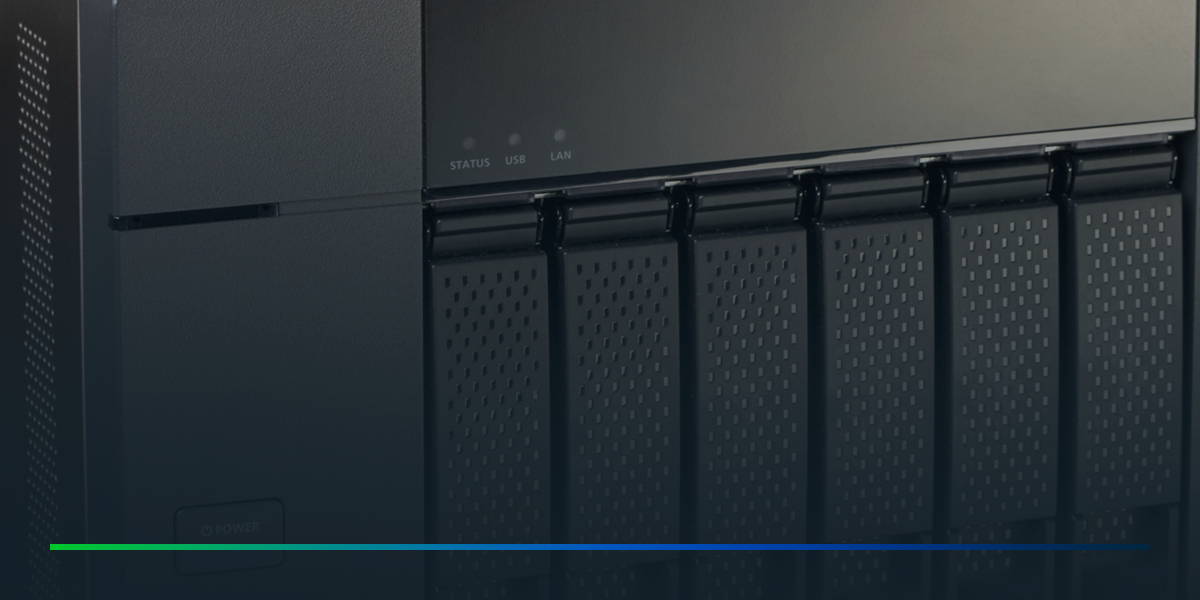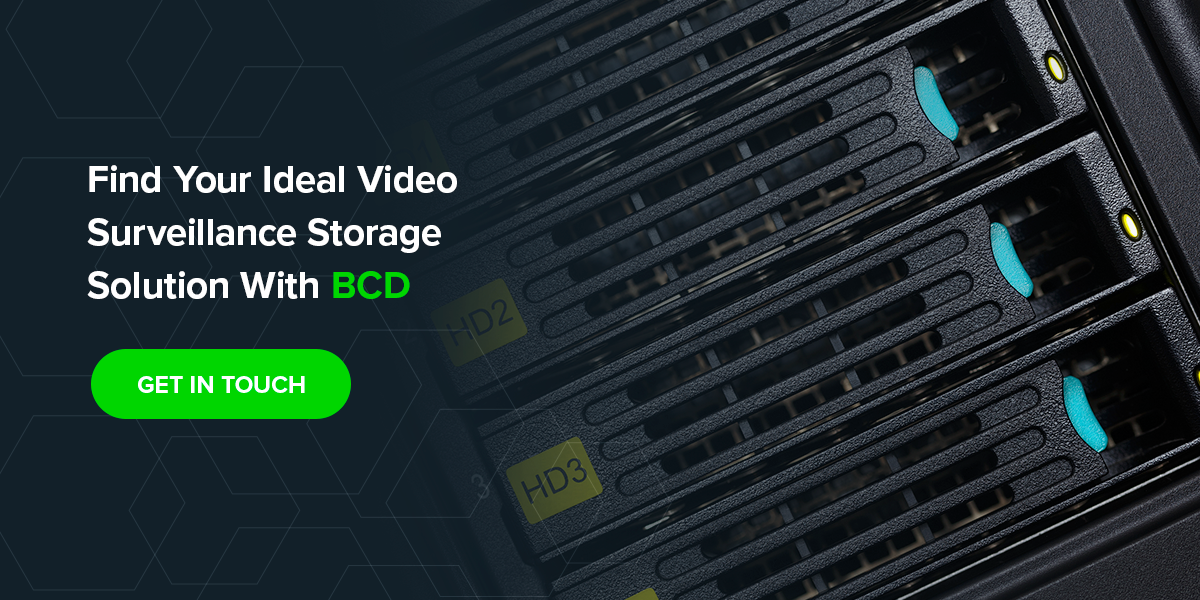Storage is crucial to ensure optimal video surveillance performance, scalability and data security. For years, companies relied primarily on digital and network video recorders. These devices were the backbone of countless security systems, dutifully recording and storing footage from analog and IP cameras. However, as surveillance technology has evolved, so have the demands placed on storage infrastructure. The advent of high-resolution cameras, advanced video analytics and ever-expanding retention requirements has pushed traditional storage solutions to their limits.
Enter enterprise-grade storage. Network attached storage and storage area networks are powerful technologies that have made significant forays into the video surveillance industry. But with this shift comes a critical question for security integrators and IT professionals — which solution suits the unique demands of modern surveillance systems?
Let’s learn more about the intricacies of NAS vs. SAN storage, exploring their unique characteristics and how they apply to video surveillance applications to help you make an informed decision for your organization.
What Is the Difference Between NAS and SAN Storage?
Network attached storage is a file-level storage architecture that provides centralized data access over a network. NAS systems are essentially dedicated file servers that connect to the network via standard Ethernet connections.
Noteworthy NAS features include the following.
- File-level access: NAS systems store and serve data as files, making them ideal for sharing documents and multimedia across a network.
- Ease of deployment: NAS devices are often plug-and-play, requiring minimal configuration.
- Cost-effectiveness: Generally, NAS systems are more affordable than SAN solutions, especially for smaller deployments.
- Built-in data management: Many NAS systems include features like RAID, snapshots and backup utilities.
In contrast, storage area network is a high-speed network of storage devices offering block-level access to data. SANs create a dedicated storage network separate from the regular local area network.
What are SAN’s unique characteristics?
- Block-level access: SANs provide raw disk access for high-performance and low-latency data transfers.
- High-speed connectivity: SAN solutions often use fiber channel or iSCSI protocols for rapid data transmission.
- Scalability: SANs can easily expand to accommodate growing storage needs.
- Centralized management: SAN systems allow for efficient allocation and management of storage resources across multiple servers.
Understanding Video Surveillance Storage Needs
You must grasp the unique demands of video surveillance storage to choose between NAS and SAN. These requirements shape the decision between the storage solutions and influence system performance.
- High-resolution video data requirements: Modern surveillance cameras capture high-definition footage, generating massive amounts of data. For instance, 4K cameras can produce up to seven gigabytes of data per hour, necessitating robust storage solutions capable of handling this data flood.
- Continuous recording and data retention policies: Many surveillance systems operate 24/7, continuously writing data to storage. Moreover, retention policies often require storing footage for extended periods, increasing storage demands.
- Scalability and flexibility considerations: As organizations expand their camera networks or upgrade to higher-resolution devices, storage systems must scale seamlessly to accommodate growing data volumes.
- Importance of data security and redundancy: Surveillance footage often contains sensitive information, making data protection paramount. Storage solutions must offer robust security features and redundancy to safeguard against data loss.
Comparing NAS vs. SAN Storage for Video Surveillance
Here’s what to consider when comparing NAS and SAN for video surveillance applications.
Performance
NAS systems are suitable for small to medium-scale deployments. They can handle multiple simultaneous read/write operations but may experience performance bottlenecks in high-traffic scenarios. SAN solutions excel in high-performance environments. Their low-latency block-level access is ideal for real-time video streaming, making them better suited for large-scale deployments with numerous high-resolution cameras.
Scalability
NAS is easy to scale by adding devices. However, it can become complex to manage as the number of devices increases and may require careful planning to avoid performance degradation during scaling. SAN systems are highly scalable and can easily accommodate hundreds of terabytes or petabytes. SAN is cost-effective for organizations with limited IT resources but may become less cost-effective at larger scales.

Cost
NAS systems have lower upfront costs, especially for smaller deployments, making them cost-effective for organizations with limited IT resources. Nevertheless, they may become less cost-effective at larger scales. SAN solutions require a higher initial investment due to specialized hardware and infrastructure. However, they are more cost-efficient for large-scale deployments and potentially offer a lower total cost of ownership in enterprise environments.
Complexity
Generally, NAS systems are simpler to set up and manage. Their user-friendly interfaces are suitable for organizations with limited IT expertise. They may require additional effort to optimize for video surveillance workloads. SAN systems are more complex to set up and configure and require specialized knowledge for optimal performance tuning. However, they offer additional flexibility and control for advanced users.
Reliability and Redundancy
Network attached storage often includes built-in RAID capabilities for data protection, and some systems offer failover and high-availability features. However, it may require additional configuration for robust disaster recovery. SAN provides enterprise-level redundancy and failover capabilities, supports advanced features like replication and snapshots and offers comprehensive disaster recovery options.
Use Cases
SAN systems are ideal for large-scale deployments with hundreds of high-resolution cameras, environments requiring real-time video analytics and organizations with existing SAN infrastructure or specialized IT teams. NAS systems are perfect for small to medium-sized businesses with limited IT resources, deployments with moderate performance requirements and organizations seeking cost-effective, easy-to-manage video surveillance storage solutions.
BCD’s Video Surveillance Storage Solutions
As industry experts and trusted advisors, BCD offers purpose-built video surveillance storage solutions to meet diverse client needs. Our product lineup includes NAS and SAN options, ensuring we can provide the right fit for any deployment.
BCD’s NAS solutions feature scale-out architecture supporting up to 28 petabytes of storage, no single point of failure for enhanced reliability and a five-year on-site, next-business-day, Keep Your Hard Drive warranty. For environments demanding peak performance, our SAN storage arrays offer up to 1.68 petabytes capacity in a single chassis, ADAPT, RAID 0, 1, 5, 6, 10 and 50 options for flexible data protection and redundant power supplies for increased uptime.
Additionally, BCD provides innovative solutions like the BCD Video Accelerator for higher throughput capabilities with increased storage scalability, performance and reliability.
Find Your Ideal Video Surveillance Storage Solution With BCD
There’s no one-size-fits-all answer when selecting between NAS and SAN for video surveillance. The optimal choice depends on factors such as deployment size, performance requirements, budget constraints and existing infrastructure. NAS systems offer simplicity and cost-effectiveness for smaller deployments, while SAN solutions provide unparalleled performance and scalability for enterprise-level installations.
Partnering with BCD ensures access to industry-leading expertise and purpose-built solutions. Our team of trusted advisors is ready to help you understand the complexities of video surveillance storage, offering tailored recommendations based on your client’s needs. With BCD’s guaranteed performance and limited lifetime technical support, security integrators and IT personnel can confidently deliver robust, reliable video surveillance systems.
Contact us today to explore our comprehensive range of video recorder and video recording storage solutions.


